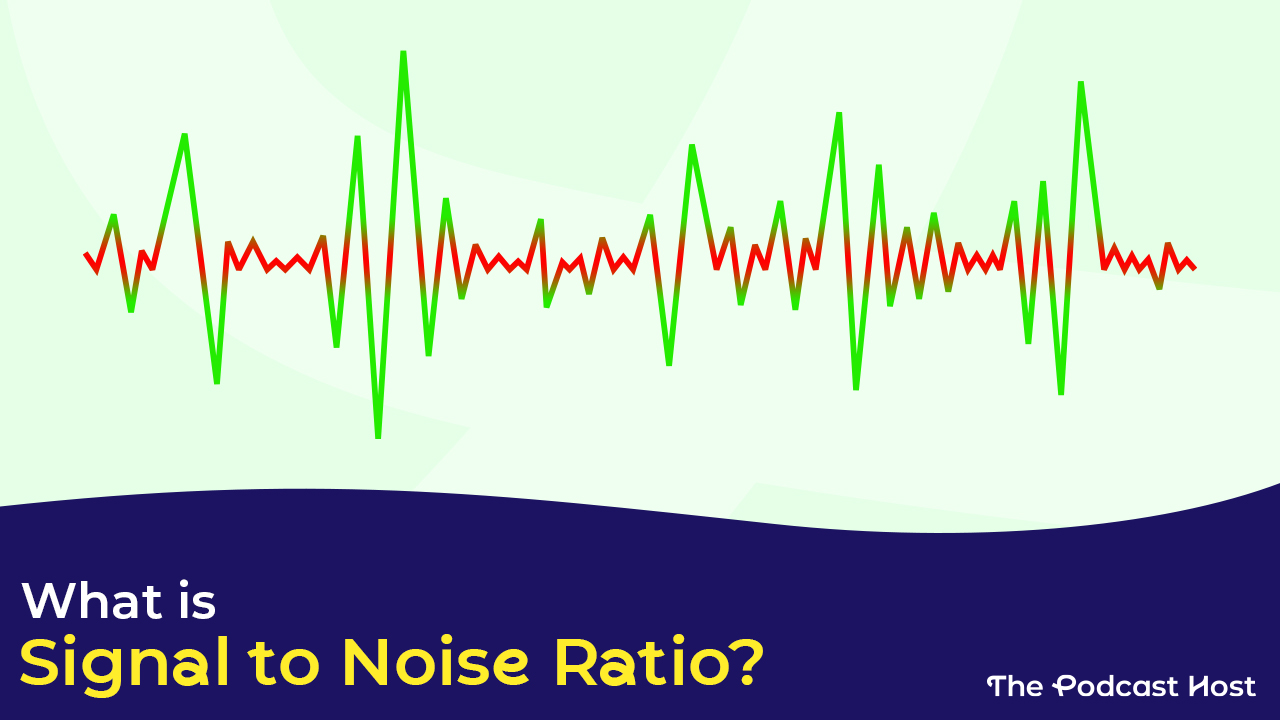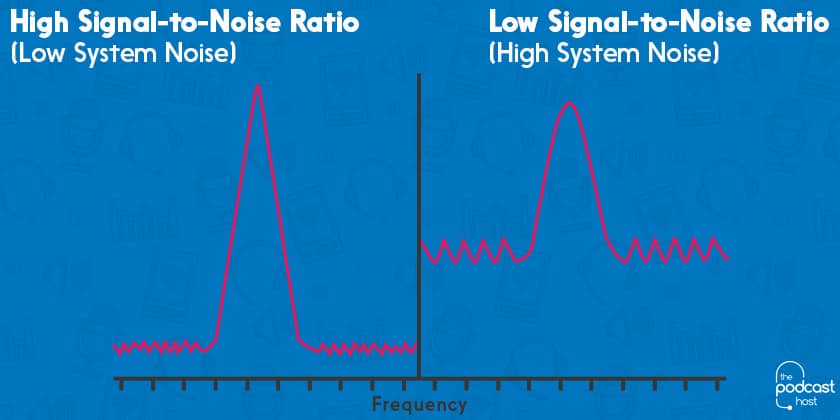What is Signal to Noise Ratio (SNR)? What to look for & how to use it

Podcasters often ask me: what is signal to noise ratio, or SNR, or S/N? It’s a tricky one to describe, so lets go down Analogy Alley for a second.
Imagine you’re meeting a friend. You haven’t seen one another in a very long time, or perhaps it’s your first time meeting in person. You would like to spend time catching up, and you both adore craft beers, so you decide to meet at a pub.
Eventually, you’ll need to decide where to meet. You could meet at a local pub, known for their tap selection. But, it’s generally crowded and noisy, making conversation difficult. Instead, you decide to meet at an intimate little local bar that is less crowded, so you can enjoy spending time chatting with your friend.
This is a decision based on signal to noise.
I get many questions about signal-to-noise (S/N). At the heart of it is the fact that signal-to-noise is trying to quantify something we already understand intuitively. How quiet should the noise be, in order to produce a signal that people can hear and understand?
The simplest way to understand signal-to-noise is by defining its components:
Signal
In terms of sound, signal refers to any electrical voltage that provides information.. In terms of audio, signal refers to the information, or the recorded sound.
For example, in our pub, our signal is the conversation we’re trying to have with our friend.
Noise
Noise is any constant sound that is not your signal. It is typically a sound source that you’re trying to filter out, or rise above, in order to communicate some other audio information. Noise can range from an inaudible drone, to a clearly perceptible hiss, to a cacophony of loud machinery.
In sound, we typically deal with self-noise (the hiss audio equipment makes), or a noise floor. This is a sum of all noise sources in a recording, other than the voice or signal we’re trying to record).
In our pub, the crowd, music, sounds from the kitchen, or any sound outside of our conversation is noise.
Signal to Noise
Signal-to-noise, then, is simply the ratio of desired signal (S) in relationship to unwanted noise (N). When we think about signal-to-noise in our audio equipment, we’re simply asking if our equipment is quiet enough to carry the audio signal without being distracting.
Or, in terms of our pub, we are asking how loud we will need to shout before our friend can hear us, and whether or not we can hear them.

Where signal-to-noise can get confusing is in defining ”what is noise”. In a recording, noise refers to anything that is not the information we are recording. In our pub scenario, noise is anything that is not our conversation. However, if we are recording the crowd in the bar, noise refers to any constant sound that is not your crowd.
When sound engineers talk about equipment, such as microphones, we measure the signal against self-noise. So, while we may hear other background noise when we open a mic to record, that is not the noise we are taking into consideration. When we are talking about audio equipment, then, signal refers to any sound that rises above the self-noise, including room noise. Confused yet?
So where’s the ratio?
Another confusion regarding signal-to-noise is how to express it in numbers. In audio, we express signal-to-noise in decibels (dB), when we expect to see a ratio or a fraction. We calculate signal-to-ratio using voltage. However, voltage isn’t often a meaningful measurement in audio, as we tend to think in terms of how things sound, rather than how they conduct electricity.
Therefore, in audio, we express signal to noise in dB. This value is already calculated and converted from the signal and noise voltage. It’s more meaningful in audio terms of measurement.
What’s a good S/N?
In a studio setting and when selecting equipment, the goal is to:
- Have a S/N of 60dB or greater.
- 70dB is even better.
- 80dB or greater is ideal.
Essentially, the goal is to get the most amount of signal with the least amount of noise. A good approach is to record at higher input gains, since increasing the volume of a recorded source also increases any recorded noise.
Final Recording Tips
In terms of recording, listen to the environment. Persistent broadband sounds like talking, HVAC blowers, wind and moving water sources will increase the noise floor of the recording, and can effectively decrease your signal to noise ratio below usable levels. In this instance, it is best to shut off any equipment making the sound, or to move away from the source of the sound altogether.
If the noise level and the signal are too close together, the noise becomes like a crowded bar, and our signal, like a conversation becomes more difficult and more distracting to hear.
For more information about reducing noise, check out How To Create A Silent Home Studio.
Need More Help?
In Podcraft Academy we have courses on everything from equipment and editing, to promotion and monetization. On top of that, we run weekly live Q&A sessions so you can get all the help and advice you need on an ongoing basis.
